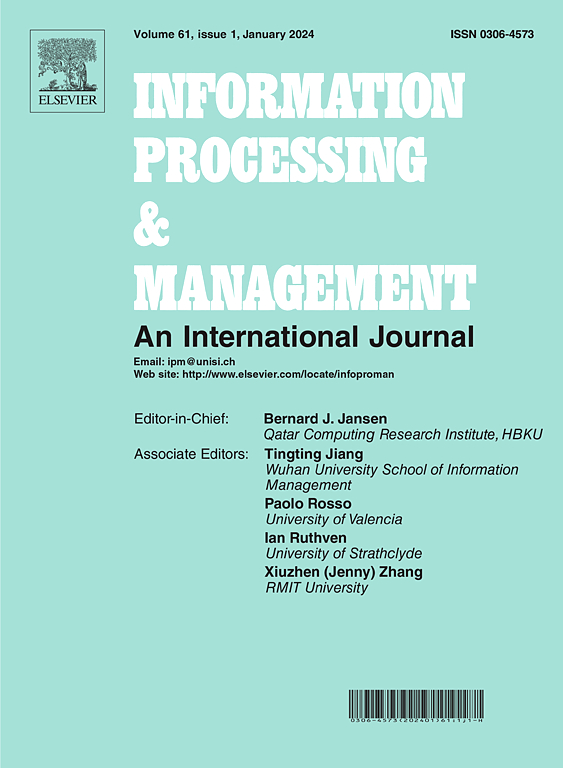ConDiff:推荐的条件图扩散模型
IF 6.9
1区 管理学
Q1 COMPUTER SCIENCE, INFORMATION SYSTEMS
引用次数: 0
摘要
目前,大多数现有的图扩散模型没有明确地集成推荐系统中用户协作信号和用户-物品交互图的关键特征,限制了其提升推荐性能的能力。为了减轻这种限制,我们提出了一个条件图扩散模型,命名为ConDiff。具体来说,我们在正向扩散过程中引入随机高斯噪声来干扰原始图结构。在逆向生成过程中,我们设计了一种条件图生成自编码器CGG-AE,它:(1)通过逻辑运算为每个在线用户引入个性化的协作信号;(2)利用用户协作信号和U-I交互信息作为扩散模型的条件输入,通过编码器获得潜伏空间的扩散-协作和扩散-交互数据,然后利用解码器重构生成更高质量的原始U-I交互信息。在三个基准数据集上进行的大量实验表明,ConDiff优于最先进的模型。值得注意的是,在动漫数据集上,ConDiff分别提高了Recall@10和Recall@20 18.99%和17.94%,分别达到0.2607和0.3721。代码可在https://github.com/xl-wen/ConDiff上获得。本文章由计算机程序翻译,如有差异,请以英文原文为准。
ConDiff: Conditional graph diffusion model for recommendation
Currently, most existing graph diffusion models do not explicitly integrate key features of user collaboration signals and user–item (U–I) interaction graph in recommendation systems, limiting their ability to enhance recommendation performance. To alleviate this limitation, we propose a conditional graph diffusion model for recommendation, named ConDiff. Specifically, we introduce random Gaussian noise during the forward diffusion process to perturb the original graph structure. In the reverse generation process, we design an autoencoder for conditional graph generation, CGG-AE, which: (1) introduces personalized collaboration signals for each user online through logical operation; (2) utilizes user collaboration signals and U–I interaction information as conditional inputs to the diffusion model, obtain diffusion-collaboration and diffusion-interaction data in latent space through the encoder, and then use the decoder to reconstruct and generate higher-quality original U–I interaction information. Extensive experiments on three benchmark datasets demonstrate that ConDiff outperforms state-of-the-art models. Notably, on the Anime dataset, ConDiff improves Recall@10 and Recall@20 by 18.99% and 17.94%, reaching 0.2607 and 0.3721, respectively. The code is available at https://github.com/xl-wen/ConDiff.
求助全文
通过发布文献求助,成功后即可免费获取论文全文。
去求助
来源期刊

Information Processing & Management
工程技术-计算机:信息系统
CiteScore
17.00
自引率
11.60%
发文量
276
审稿时长
39 days
期刊介绍:
Information Processing and Management is dedicated to publishing cutting-edge original research at the convergence of computing and information science. Our scope encompasses theory, methods, and applications across various domains, including advertising, business, health, information science, information technology marketing, and social computing.
We aim to cater to the interests of both primary researchers and practitioners by offering an effective platform for the timely dissemination of advanced and topical issues in this interdisciplinary field. The journal places particular emphasis on original research articles, research survey articles, research method articles, and articles addressing critical applications of research. Join us in advancing knowledge and innovation at the intersection of computing and information science.
 求助内容:
求助内容: 应助结果提醒方式:
应助结果提醒方式:


